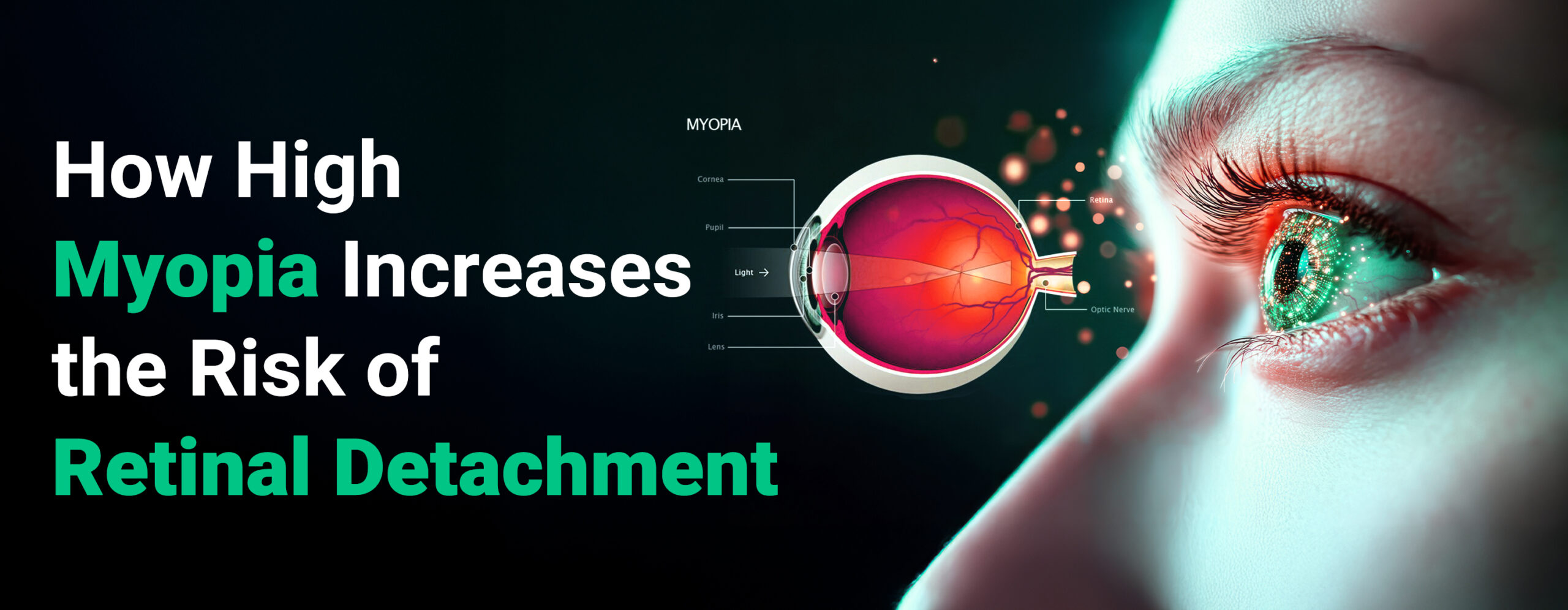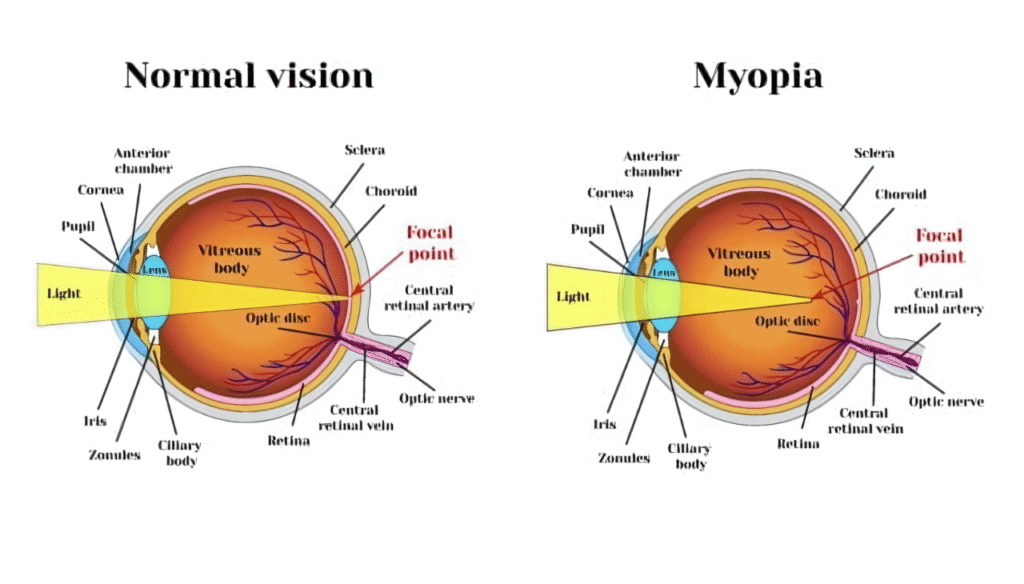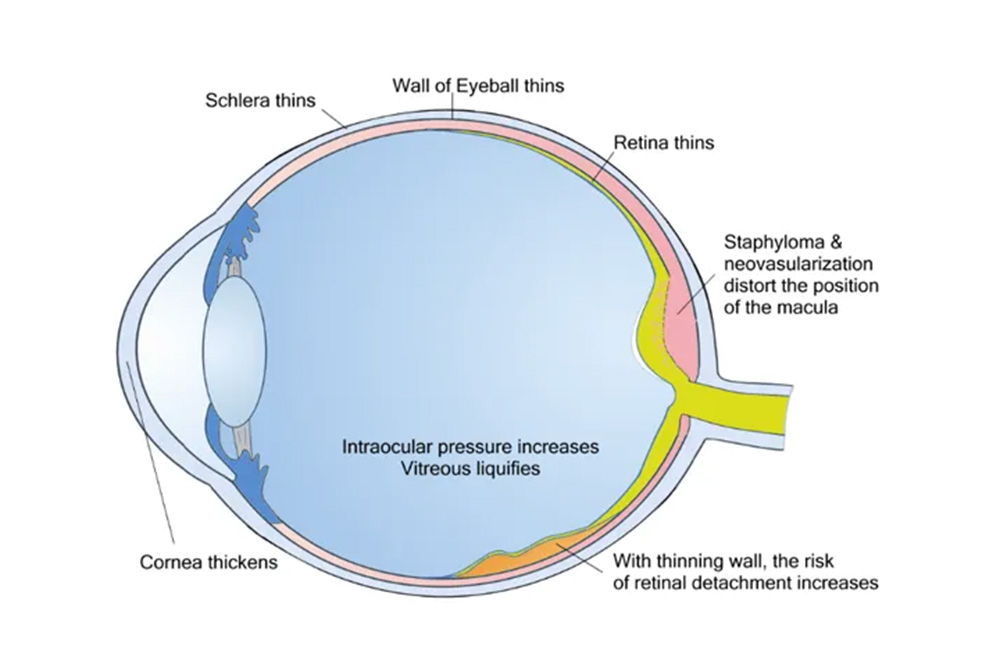
-
 Posted By shubham dhyani
Posted By shubham dhyani -
-
Comments 0
Last month, my colleague Punika came to work visibly shaken after her eye appointment. At just 28, she’d been told her -9.0 diopter prescription put her at serious risk for retinal problems. “I thought I just needed stronger contacts,” she confided over coffee. “Turns out my eyes have been changing in ways I never knew were dangerous.”
If you’re reading this, chances are you or someone you care about has been dealing with progressive nearsightedness. Maybe you’ve noticed your child’s prescription getting stronger every year, or perhaps you’ve started wondering why your eye doctor keeps mentioning “retinal health” during routine check-ups. Here’s what I wish someone had explained to Punika – and what everyone dealing with progressive myopia should understand about the real risks that come with severe nearsightedness.
Your Retina: More Fragile Than You'd Think
Think of your retina as wallpaper lining the back of your eye – except this “wallpaper” lets you see. It’s packed with millions of light-detecting cells that convert what you’re looking at into signals your brain can understand. These cells depend entirely on a network of tiny blood vessels underneath for their survival.
Now, imagine stretching that wallpaper. The more you pull, the thinner it gets, and eventually, it might tear or peel away from the wall completely. That’s essentially what happens during retinal detachment – your retina loses contact with its blood supply and stops working properly.
There are different ways this can happen, but retinal detachment in myopic people usually involves tears that let fluid seep behind the retina. Unlike a small tear in actual wallpaper, this is a medical emergency that can steal your sight permanently if not treated quickly.

When Your Eyeball Changes Shape: The High Myopia Problem
Here’s something most people don’t realise about severe myopia – it’s not just about needing thicker glasses. High myopia (usually anything worse than -6.00 diopters) changes the shape of your eye. Instead of staying nicely round like a basketball, your eyeball starts stretching into more of a football shape.
This stretching happens because your eye keeps growing when it should have stopped. A healthy adult eye measures about 23-24mm from front to back. Punika’s? Probably closer to 28mm now. That extra length might not sound like much, but it makes a world of difference for your retina.
When your eye stretches, several concerning things happen:
Your retina gets pulled thin like taffy being stretched. The peripheral areas develop weak spots – what doctors call lattice degeneration or pavingstone degeneration. Over half of the people with high myopia end up with these problem areas. The jelly-like substance filling your eye (called vitreous) starts breaking down earlier than it should, pulling on your retina as it shrinks.
Research shows that people with high myopia face nearly 40 times higher risk of retinal detachment compared to those with normal vision. When you put that in perspective – we’re talking about 869 cases per 100,000 people yearly versus just 22 cases in people without myopia – the difference becomes stark.
Also Read:- A Comprehensive Guide to Retinal Diseases: Prevention, Symptoms, and Treatments
Myopia and Retinal Diseases: The Risk Ladder
What surprised me most when researching Punika’s situation was learning how dramatically risk increases with each step up the myopia ladder. It’s not a gradual slope – it’s more like climbing increasingly dangerous cliffs:
At -3.00 diopters, you’re looking at 3 times the normal risk. By -6.00 diopters, that jumps to 9 times higher. But if you reach -15.00 to -20.00 diopters? You could be facing 110 times the normal risk of retinal detachment.
Age plays a role, too. The older you get with high myopia, the higher your risk climbs, especially after 60. Men tend to have higher rates than women across all myopia levels – something researchers are still trying to fully understand.
There’s also a genetic component that’s pretty sobering. Studies suggest that for every 6 diopters your myopia worsens, your retinal detachment risk increases by more than 7 times. If myopia runs in your family, this connection becomes even more relevant.
Previous eye surgeries can complicate things further. LASIK or cataract surgery in highly myopic eyes may add stress to already vulnerable retinas. It’s not that these surgeries are dangerous – they’re often necessary – but they require extra caution and monitoring in people with severe myopia.

What You Can Actually Do About It
I know this information might feel overwhelming. When Punika first learned about these risks, she spent the entire weekend researching worst-case scenarios online (not the best idea, honestly). But here’s what we discovered together that matters: understanding your risk means you can do something about it.
For kids showing signs of worsening myopia, there are proven ways to slow progression:
- Multifocal contact lenses work by providing different focus zones that reduce eye strain
- Special eyeglass lenses use “peripheral defocus” to help control eye growth
- Some newer contact lenses are specifically designed to target myopia progression
These aren’t cure-alls, but they can significantly slow down how fast myopia develops, potentially preventing it from reaching those dangerous high levels.
Regular eye exams become crucial once you’re in moderate to high myopia territory. These aren’t just vision tests – they’re detailed retinal health checks. Your eye doctor will look for those weak spots, monitor any changes, and catch problems before they become emergencies.
Retina health risks in myopia extend beyond just detachment, so comprehensive monitoring becomes your best defence. When dealing with these concerns, having access to advanced diagnostic equipment and specialists who truly understand high myopia complications makes an enormous difference. At AK Institute of Ophthalmology (AKIO), we’ve seen how proper monitoring and early intervention can preserve vision in even the most challenging cases, offering hope and expertise when patients need it most.
Moving Forward with Knowledge, Not Fear
Learning about these risks through Punika’s experience changed how I think about eye health, but it didn’t leave either of us paralysed with worry. Instead, it motivated us both to be more proactive. Punika now schedules regular retinal screenings, knows what symptoms to watch for (such as sudden flashes, new floaters, or curtain-like vision loss), and has accepted that her eyes require extra attention.
The connection between myopia and retinal diseases is real and significant, but it’s not a death sentence for your vision. Early detection, consistent monitoring, and working with knowledgeable eye care professionals can help you navigate these challenges successfully. Whether you’re managing your high myopia or worried about your child’s worsening nearsightedness, remember that awareness paired with action gives you the best chance of preserving your sight for the long haul.
Don’t let fear drive your decisions – let knowledge guide them instead.
Why AKIO Is Chosen by Many for Retinal Surgery
AKIO has been helping patients with retinal detachment for years, using both experience and updated tools. It was the first private setup in North India to start doing 3D micro-incision surgeries for retina issues. That’s made a real difference in how patients heal and see again. They don’t stick to just one kind of treatment. Depending on what’s needed, doctors use laser, vitrectomy, or other options. It’s this kind of careful, case-by-case approach that makes people trust them.
Now, imagine stretching that wallpaper. The more you pull, the thinner it gets, and eventually, it might tear or peel away from the wall completely. That’s essentially what happens during retinal detachment – your retina loses contact with its blood supply and stops working properly.
Recent Posts
- Why You Need a Retina Specialist for Cataract Surgery – Cataract + Retina Issues Together
- Retina Injections (Anti-VEGF): Procedure, Cost, Effectiveness, Risk & Recovery Experience
- Early Signs of Retinal Detachment You Should Never Ignore
- Floaters vs Retina Detachment – How to Know the Difference?
- Manage Your Retina Conditions: Simple Healthy Habits for Better Vision



